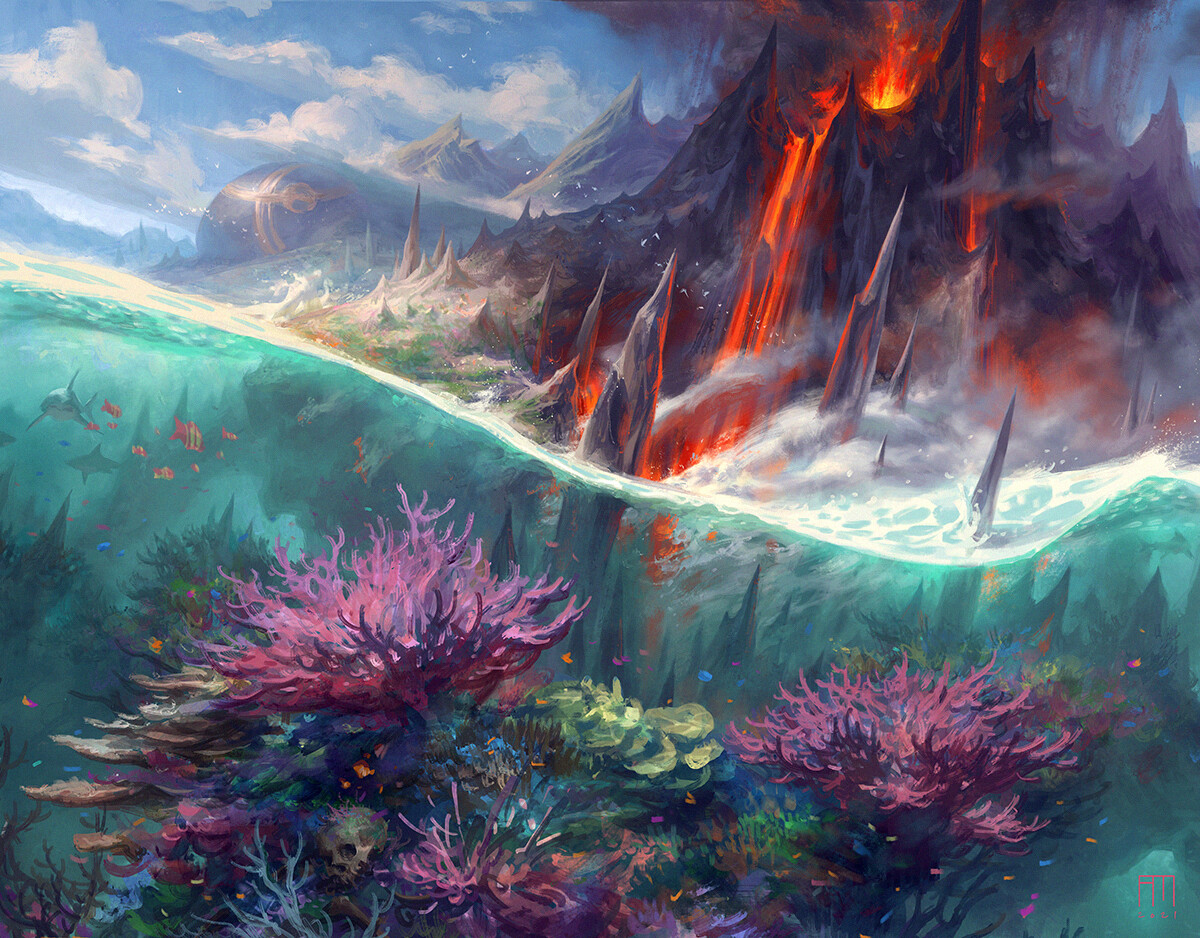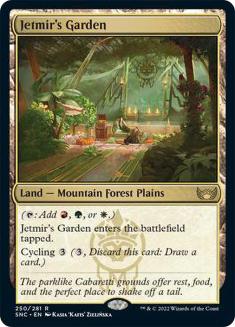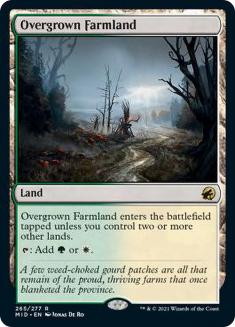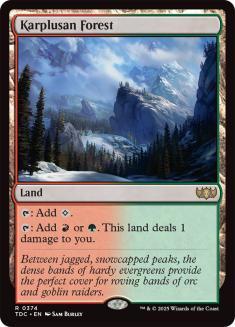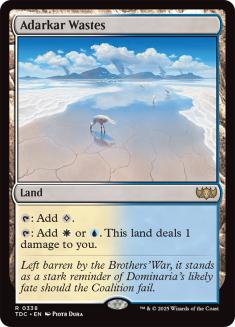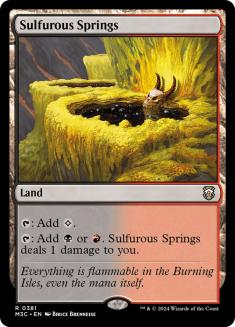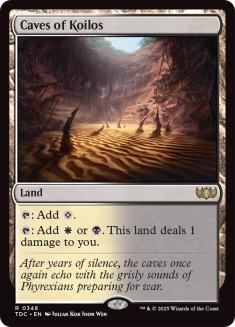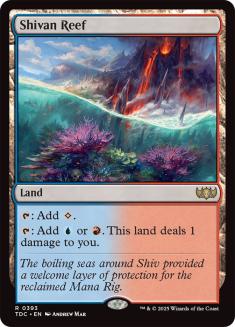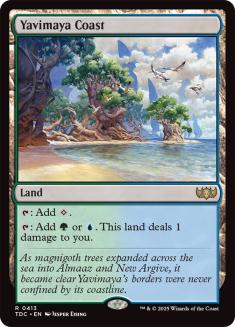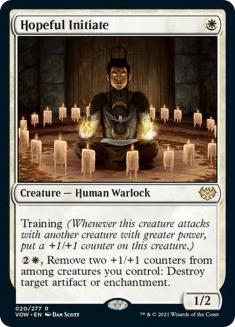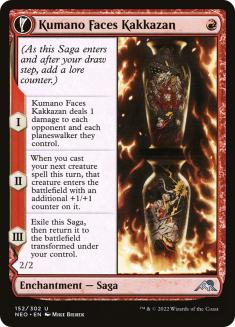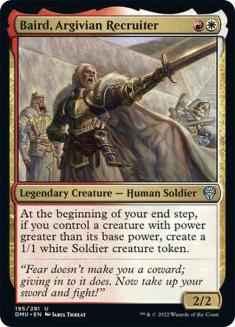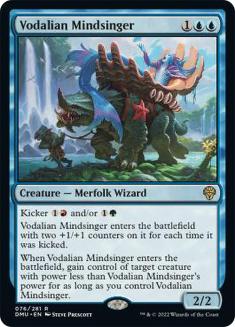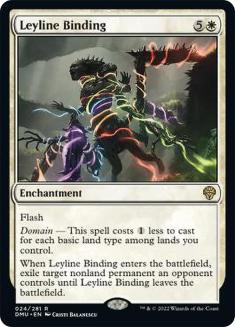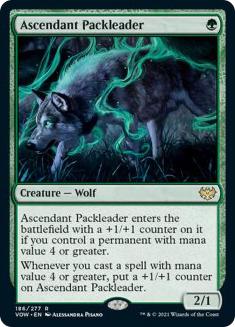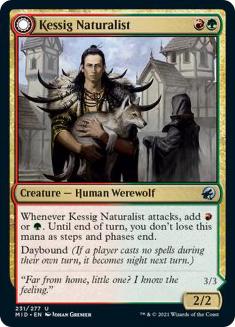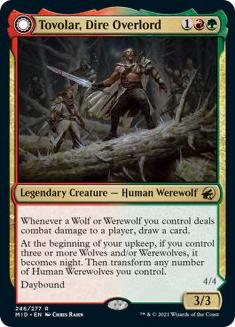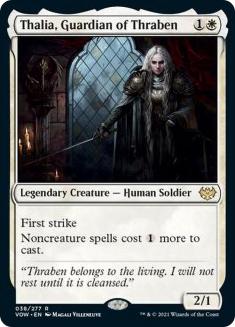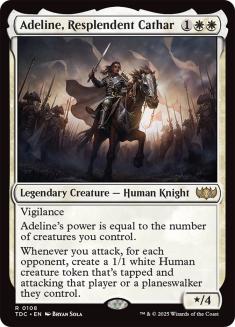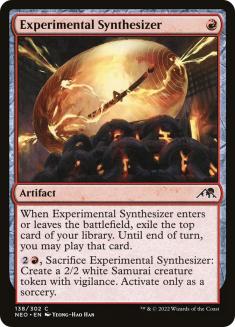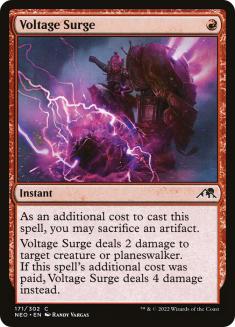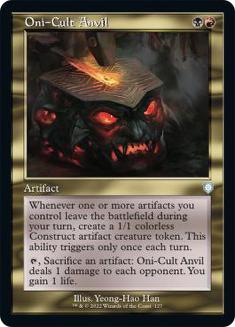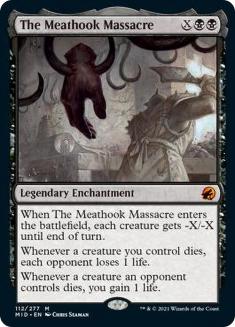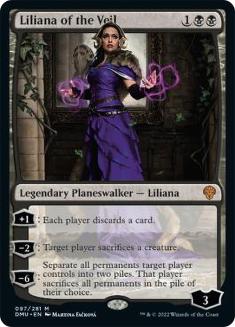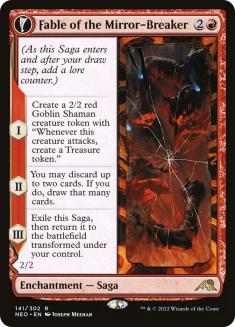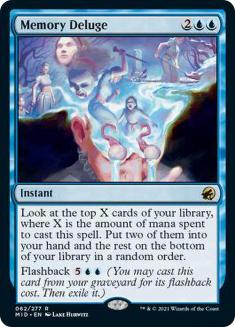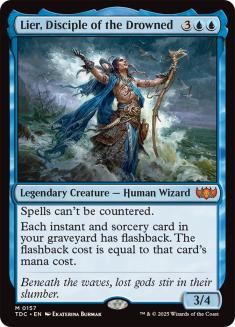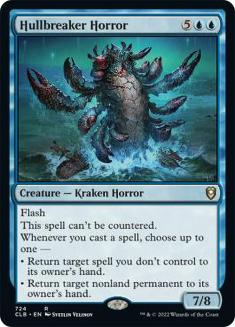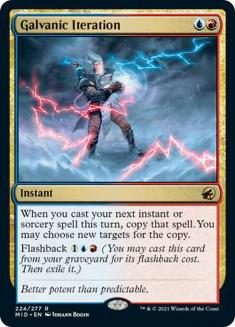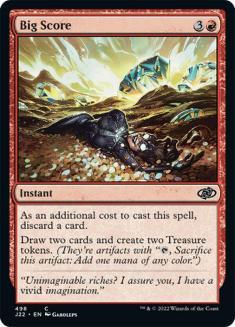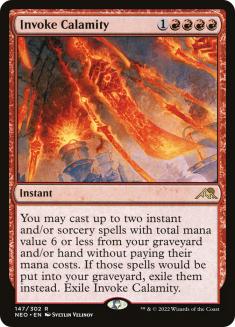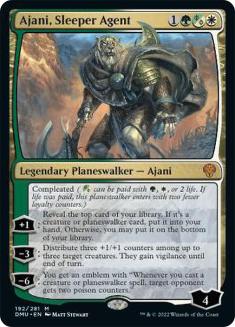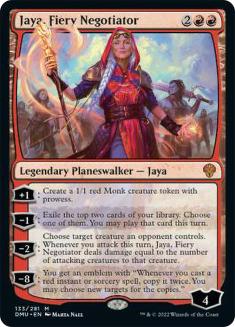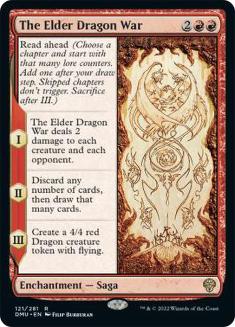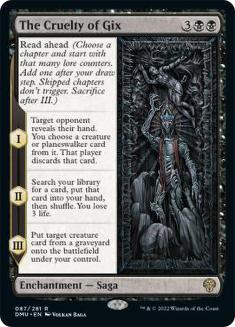With Dominaria United, Standard bids farewell to the sets that have defined it for what feels like forever. It’s almost strange to think about building decks without Esika’s Chariot and Expressive Iteration, or figuring out my manabase without reflexively reaching for my Pathways.
If Wizards of the Coast (WotC) wants to revive interest in paper Standard, this rotation is the perfect opportunity. The return of competitive Magic in paper has focused on Pioneer and Modern so far, but we know that Standard is a format for the second Pro Tour, and I assume there will be a stronger push for stores to run Standard RCQs.
Challenge, Meet Opportunity
This means there’s more pressure on Standard to be good than there has been in a while. A few years ago, sets were designed and evaluated with Standard as a priority, and this was reflected in the competitive Magic calendar. Recently, Standard has felt like a complete afterthought; you can play endless games on the Arena ladder, but to what end?
It’s hard to tell just how good the format will be until people have a reason to attack it. When Innistrad: Midnight Hunt finally kicked Throne of Eldraine and friends out of Standard a year ago, some pundits quickly hailed that as one of the most promising Standard formats of all time – only for it to rapidly collapse into a two-deck format as Alrund’s Epiphany squared off against Old-Growth Troll. For now, we can focus on the cards or clusters of cards that we know will be important.
The Mana
The spells grab your attention from the set, but the mana makes them work. This format will have an unusual, imbalanced fixing distribution, which will inform and constrain what happens in it for the first few months.
Our experience in Streets of New Capenna Standard – and Ikoria Standard with the first cycle of Triomes before that – shows just how crucial Jetmir’s Garden and the rest of the cycle will be. Along with the Innistrad ‘slowlands,’ decks in these colour combinations have great mana…as long as you don’t need it too soon.
By contrast, the painlands are a boon to proactive decks in particular, meeting their competing mana requirements in the early turns and allowing aggro to punish other decks that are too reliant on their painlands for fixing. These are a great start for an aggro deck in multiple colours, but can’t be the whole story.
Boros Aggro is a popular archetype in this outgoing Standard and can hope to make the jump to Dominaria United. Many of its tools survive rotation, and it gains compelling new build-arounds like Baird, Argivian Recruiter. The problem is that curving out consistently will be a challenge. Sundown Pass doesn’t bridge the gap between white and red one-drops on curve, and we don’t even have Battlefield Forge yet! Meanwhile, a slower Naya deck with a whole third colour to worry about can rest easy, since it has a wide range of slower but stronger fixing.
We were spoiled on splashes while Pathways were in Standard. Your Rakdos Midrange deck probably had some interest in Xander’s Lounge already; just convert some Swamps into Clearwater Pathways and Mountains into Riverglide Pathways, and you suddenly had a functional Grixis manabase without much effort.
These splashes are still possible but come at a much higher cost. It is easy to lose close games because your Mountain was an unnecessary Shivan Reef, and when you do, it’s clear why that happened. This makes the ‘off-colour’ kicker cards a little less appealing. Touching green to fully power Vodalian Mindsinger in your Izzet deck is non-trivial.
To make matters more complicated, the painlands come to us on a staggered release schedule, with weird consequences for multicolour decks. Naya only has one painland; the other ‘Shards’ each have two, but there’s no predictability to which colours are emphasized (both Jund and Grixis have two red painlands right away, for example).
All bets are off with the other colour combinations. Temur has no Triome but all three painlands. If you can rely on slowlands to fill in the gaps later and aren’t too greedy with colour requirements, Temur might have the best fixing of any colour combination, despite its lack of support in the three-colour set.
The domain mechanic adds another wrinkle here. The ‘free’ Boseiju, Who Endures that you could pencil into your land column before now has an actual cost if you care about land types. Similarly, you can’t lean too hard on non-typed lands like painlands for your fixing needs if domain is why you are playing this many colours in the first place.
The Shape of Standard
This extended visit to Innistrad – especially Midnight Hunt – offered many strong benchmarks for the format that will have another chance to shine now that they don’t have to compete with Kaldheim’s finest.
Gruul Werewolves fell flat after its initial hype, and two of its best ‘tribal’ cards in Werewolf Pack Leader and Ranger Class have just rotated, but the core is still quite powerful.
Mono-White Aggro was successful in both Standard and Alchemy last season; now, it keeps most of its important cards and gains some interesting new tools. Without lands like Faceless Haven, there are no direct rewards from staying in a single colour, but dodging the mana woes covered above is a reward in itself.
Kamigawa: Neon Dynasty is another deep and powerful set that leaves us with broadly useful tools as well as some specific themes. The artifact-centric Rakdos Sacrifice deck survives intact and still has the Blood token crossover from Innistrad: Crimson Vow. Sacrifice decks more generally get to exploit Ob Nixilis, the Adversary – not the universal game-changer some feared upon its release, but an excellent tool in decks equipped to use it.
Any deck hoping to go wide with creatures has to acknowledge the elephant in the room:
The Meathook Massacre isn’t going anywhere, and its price tag will become even more imposing if Standard comes back to paper play. It’s the perfect way to stabilize and then press your advantage against any small creature deck, with the lifegain acting as a useful buffer against anyone hoping Lightning Strike heralds the return of Mono-Red Aggro. A deck like Rakdos Sacrifice (or Zombies?!) that can stack up triggers turn after turn can make it an even better investment.
It gets to share the limelight with an impressive array of black cards. Liliana of the Veil complements it nicely; an opponent may feel they have to commit more to the battlefield to neuter her -2 ability and apply pressure to her, walking into a Massacre, and Liliana deals with the one big creature that survives once Massacre cleans up everything else. Black midrange featuring four of each will be an easy (and probably successful) deck to build in Week 1 Standard.
The supporting cast is great too. Evolved Sleeper, Graveyard Trespasser, and Tenacious Underdog are versatile threats that play well with Massacre. Cut Down and Duress give you cheap interaction against everything before your midrange threats take over.
Fable of the Mirror-Breaker was the best card in Standard before, and it’s hard to see it falling much. Whether you plan to play online or offline, these are a safe investment – not least because the card is all over Pioneer/Explorer and Modern too.
Controlling blue decks in Standard will have the tools to go over the top of anything; it’s just a question of surviving until then. Lier, Disciple of the Drowned loses some steam when you can’t tap out for it against Liliana and Graveyard Trespasser is nibbling away at your graveyard, but it remains one of the best blue cards printed in years.
The combo of Galvanic Iteration plus Big Score survives rotation and has a successful pedigree. You don’t have the Alrund’s Epiphany or Goldspan Dragon + Lier endgames to play towards anymore, but winning is the easy part once you have a giant pile of mana and cards.
Recent planeswalker designs have proved difficult to evaluate – just look at the furore around Ob Nixilis! Ajani, Sleeper Agent and Jaya, Fiery Negotiator both have a lot going for them, but they aren’t automatic home runs in the vein of something like Gideon, Ally of Zendikar – and that’s a great thing. This is a good time to remember that Wrenn and Seven is still legal (though without its best friend Esika’s Chariot)!
This article wouldn’t be complete without a decklist, so, inspired by Daniel Goetschel, here’s a Rakdos deck that uses the template we can expect to see a lot in Standard, but with an exciting twist courtesy of some Dominaria United cards.
Creatures (9)
Planeswalkers (4)
Lands (26)
Spells (21)
- 2 Duress
- 1 Hero's Downfall
- 1 Infernal Grasp
- 4 The Meathook Massacre
- 2 Cathartic Pyre
- 4 Fable of the Mirror-Breaker
- 3 The Elder Dragon War
- 4 The Cruelty of Gix
Sideboard

On one level, this is a typical midrange deck, with Sagas replacing planeswalkers as the card advantage engine + finisher of choice. With eleven Sagas – which each help to find more – alongside Liliana of the Veil, it’s easy to create an overwhelming advantage turn by turn.
This is also a combo deck based around one of the most intriguing cards in the set. The Cruelty of Gix is crushing if it gets to resolve multiple chapters, but it suffers from not having an immediate impact on the battlefield – unless you can reanimate something strong. This list is designed to do just that: you have lots of incidental discard outlets via Bloodtithe Harvester, Fable of the Mirror-Breaker, and the new The Elder Dragon War. With more time, the second chapter can find a discard outlet or Titan of Industry to get all the pieces in order for the final chapter.
The rotation and release of the fall set is always an exciting time for Magic and places a lot of expectations on that new set. Dominaria United has a lot of goodwill behind it so far. Here’s hoping it can live up to that potential.

